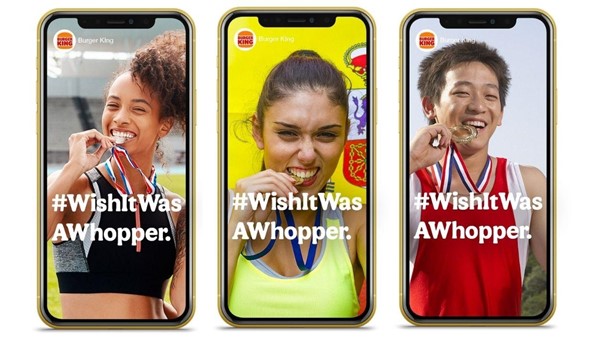Traditionally, companies are split between performance and brand marketing teams. These teams usually work independently from one another with little knowledge — or even understanding — of what exactly happens in the other camp. But digital advertising is changing at a fast pace, and businesses and organizations will need to change with it.
Brand and performance marketing are coming closer together, and — in many ways — are becoming more collaborative and codependent with time. A company can’t focus or spend too much on brand marketing only, as it will reflect on the ability to scale the business.
On the other side, using performance marketing to only drive short-term conversions, without fueling the funnel at the top, will impact the ability to grow the company over time. The smart marketing approach is to build brand awareness with brand marketing alongside performance marketing for short-term acquisition.
What Is Brand Marketing?
Everything around us is a brand — our clothes, our phones, the cars we drive, the food we eat. In the era of the social media influencer, even people became brands.
It’s not easy to define what a brand is — but to avoid over-complications, let’s simply say that it’s about how people feel about and describe a company. This means that brands are about consumers' emotions and perceptions.
Brand marketing a long-term strategy that includes one’s “brand” in every aspect, and can be achieved through “continually and consistently communicating (a) brand's identity and values in meaningful and engaging ways.”
However, performance marketing also makes up part of a brand — although it has little to do with emotions and lives on the other side of the marketing spectrum.
Performance marketing is, just as the name suggests, strictly focused on performance and short-term results — like leads, conversions, and sales. It is data-driven and strives to deliver a higher short-term return on investment.
If branding and brand marketing ensures the company's longevity over time, performance marketing is the best tool to drive business growth now. Well, that’s what it used to be.
How Is Performance Marketing Changing?
If you’ve been working in performance marketing for the last decade or so, you know that the game has changed tremendously. Due to constant digital innovation and machine learning algorithms taking over, we are up against a new challenge — shifting our performance marketing mindset.
How we used to do things will no longer work in the programmatic future of performance marketing.
Digital has changed our lives completely — how we think, interact, and make choices. Over half of the world’s population is now online and over 5 billion people own mobile devices. Consumer behavior is getting more sophisticated, mobile is taking over and, with the rise of paid social, performance marketing is becoming more and more visual.
It’s No Longer Brand vs. Performance Marketing
It’s brand and performance marketing working together in synergy — or even becoming nearly the same thing.
Everything you do to acquire customers is representing and building your brand. With paid social marketing becoming stronger than ever, we're now able to target a great number of prospective customers at a healthy return on ad spend (ROAS), using advanced algorithms to reach the right people at the right time.
Unless you're an established and well-known brand, it's unlikely that many consumers know about your business — so this will be their first interaction with your brand. That’s why it's so important that your creative efforts, your ad copies, and your landing pages are all brand-aligned.
Performance marketers might have skipped the brand part of the equation in the past and made decisions strictly on KPIs — but this is no longer the case. Raise your hand if you’ve been hesitant to switch off an ad that “has been working so well”, even if it’s off the brand image — and later got in trouble with the branding team because of it.
Users move fast between channels and devices — and they expect to see a consistent message across all. Today, consumers use an average of almost six touch-points compared to two to three in the past. According to Zendesk, 87% of customers think brands need to put more effort into providing a seamless experience, but 55% of companies have no cross-channel strategy in place. This is a big gap between customers’ expectations and companies’ efforts trying to keep up.
The numbers show that using an omnichannel approach with a consistent message across all touchpoints cannot be neglected and all performance marketing activities should be advocating for the brand as well.
As a payoff, along with short-term acquisition, you’ll help build your brand and raise awareness. Look at the impressions of brand search campaigns, for example — or organic visits around the same time you pushed a Facebook prospecting campaign. If you see an uplift, that shows how your performance marketing efforts boosted brand awareness.
And vice versa — having a strong brand will result in higher click-through-rates and lower CPAs for performance marketing campaigns. No wonder established brands, such as Nike, invest in brand-boosting campaigns revolving around beautiful and motivational stories — without even caring about a call-to-action feature.
In return, KPIs on all other channels improve. Of course, not everyone has the budget or the history of Nike. For start-ups where customer acquisition and company growth are crucial for staying in business, investing a great chunk of the budget in just brand marketing can be dangerous. It's even more crucial for these companies to find a balance between the brand and performance marketing messages — but, keep in mind, they'll only get ahead by mixing both.
Paid Social Is Taking Over
Traditionally, brand and performance marketing lived on their own planets because they had their own advertising channels and metrics.
Television and offline marketing activities were associated with branding and performance marketing was stricly digital — using search, shopping, or display channels.
When social media advertising took over, the lines between brand and performance marketing became blurred — as social media belongs to both brand awareness and acquisition channels. According to a Deloitte report for Facebook Australia:
"two in three marketing managers believe that digital and social media are the best channels for building a brand and almost two in five marketing managers think that social media is the most effective medium for building customer engagement."
Advertising on paid social is very different than advertising on paid search and so is the experience of the user. Social media is all about content — which is how performance marketing became more visually appealing and interactive.
With new ad formats — such as video, social stories, and instant experience ads — the need to tell a story rather than just “promote” moved brand and performance marketing even closer together. Now, performance marketers focus on the creative side more than ever.
Since algorithms basically “run” performance marketing campaigns and will do even more so in the future, the creatives remains the strongest asset we have to optimize KPIs and move the needle. And speaking of creatives, we mean...
Video, Video, and More Video
Video marketing or performance video is booming, and most marketers believe that video content is the most important marketing tool right now. According to Search Engine Journal:
“55% of consumers watch videos before making purchase decisions”.
In short, video is now a compulsory marketing tool to get more exposure and better performance. Video ads have higher CTR than image ads and can say quite a lot in a short amount of time.
Videos are compelling, engaging, and memorable. It’s a competitive advantage to use a mix of brand and performance marketing messages in videos in order to increase awareness and acquisition at the same time.
Brand & Performance: Better Together
You should now be fully convinced that performance and brand marketing go hand in hand. It’s time for both teams to start working together as one and partner closely when planning, executing, and reporting on results.
When it comes to producing and testing creatives, there is an absolute need to establish a close collaboration in order to ensure brand consistency over all channels. Plus, as both team members traditionally come from quite different backgrounds, they can benefit from each other's perspective.
A brand marketer can add compelling and engaging elements to strictly performance-oriented copy and performance marketers can help with valuable knowledge on audience targeting, audience insights, ad engagement, and more. You need brand marketing to fuel the top of the funnel and you need performance marketing to make your audience go all the way through it.
Performance marketing provides great value for brands. Here are just some of the pros:
Now, brands can share the risk and have higher returns on spend by using performance marketing techniques.
Brand marketing has its own channels as well, but measuring the results is often hard or even “vague”. By using the advancement of performance tracking and brand tracking data, brands can now analyze better and minimize the risks.
Programmatic advertising makes it far more efficient to target and engage millions of prospective customers across different channels and devices. Now brands are given the opportunity to diversify and broaden their reach while managing and measuring the engagement better.
Companies can align the message across channels and use an omnichannel holistic approach
Brands are able to easily test different messages, get fast and measurable results on how users respond and engage with their content.
Of course, there are cons as well: performance marketing, although highly data-driven, is not risk-free. CPAs on prospective customers are still quite high on certain industries, there is fierce competition on main performance channels such as Google and Facebook — and costs are substantially increasing over time.
Final Thoughts
However, factoring in the risks, the advantages are still tremendous and the direction is clear. Businesses can only benefit from using performance marketing if they also work towards building brand awareness. The two teams need to work on the creative strategy closely together.
They should use performance marketing copy techniques, such as “free delivery” or “discounts” as the main acquisition driver, but mix it with a video as well that tells the brand story.
Prioritizing engaging ad formats, creating consolidated reports on main KPIs, and building a data-driven attribution model to measure the impact of each channel are just some of the tips on how to use performance marketing and brand in synergy.
It’s time for a shift in the industry from the mentality of “brand” vs “performance marketing”. When we talk about marketing, it’s all performance and it’s all brand.





